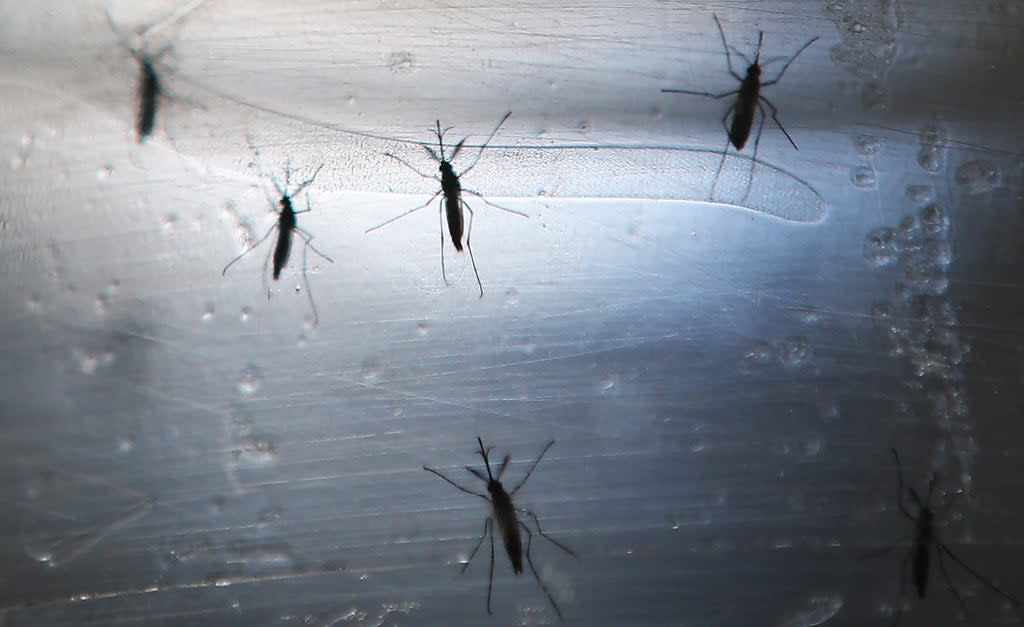Scientists reveal what attracts mosquitoes to humans - our citrusy smell

Mosquitoes have always preferred to feast on humans over other animals but exactly how they distinguish between the two has remained a mystery until now.
Aedes aegypti mosquitoes have evolved to bite humans by exclusively relying on odour molecules distinct from those exuded by other creatures in the surrounding environment, revealed a new study published on Wednesday in the journal Nature.
These mosquitoes, that act as vectors for diseases like Zika, dengue and yellow fever, strongly prefer human odour over the odour of animals.
The new study, involving scientists including those from Princeton University in the US, has now applied a novel approach by imaging mosquito brains at a very high resolution to watch how the pesky insects identify their next victims.
For this, scientists genetically engineered mosquitos to make their brains light up when active and delivered human- and animal-flavoured air in ways the mosquitoes could detect while inside the team’s custom-built imaging equipment.
Researchers sought to understand the exact blend of components in the air that the mosquitoes used to recognise human odour.
“We set out to try to understand how these mosquitoes distinguish human and animal odour, both in terms of what it is about human odour that they cue in on and what part of their brain allows them to cue in on those signals,” Carolyn “Lindy” McBride, an assistant professor of ecology and evolutionary biology and neuroscience, said in a statement.
“We sort of dove into the brain of the mosquito and asked, ‘What can you smell? What lights up your brain? What’s activating your neurons? And how is your brain activated differently when you smell human odour versus animal odour?’” Dr McBride said.
Our work on human odor coding in the Zika/dengue mosquito now in final form!
This collaborative work was led by @zhaozhilei with critical contributions from @JessicaLZung on odor analysis, @AnnikaHinze and Rickard Ignell on wind tunnel behavior…https://t.co/Z8ieJIKEoi— Lindy McBride (@lindymcbr) May 4, 2022
While human odour is composed of dozens of different compounds, these are also present in most mammals in slightly different ratios.
To compare and test how mosquitoes detected mammal and human odours, scientists collected hair, fur and wool samples and used odour from 16 humans, two rats, two guinea pigs, two quails, one sheep and four dogs.
“For the human samples, we had a bunch of great volunteers. We had them not shower for a few days, then strip down naked and lie down in a Teflon bag,” graduate student Jessica Zung said.
The participants were naked since cotton, polyester and other clothing fibers have their own smells that would distort the data, scientists said.
They then collected human and animal odours nondestructively and designed a system which allowed them to pass human odour at the mosquitoes in the imaging setup.
This involved creating a wind tunnel to test simple blends or single compounds and breeding viable strains of mosquitoes whose brains responded to the equipment.
Initially, researchers suspected that mosquito brains likely had a sophisticated technique for distinguishing humans from other animals, but the study found that the process was much simpler than thought.
“The simplicity surprised us. Despite the complexity of human odour, and the fact that it doesn’t really have any kind of human-specific compounds in it, the mosquitoes have evolved a surprisingly simple mechanism for recognising us,” Dr McBride said.
We found that females have a set of sensory neurons selectively tuned to long-chain aldehydes. The aldehydes, in turn, are enriched in human odor, likely due to break-down of a unique fatty acid in human sebum. (more details in Zhilei’s preprint thread https://t.co/ldqMYyBNCo)
— Lindy McBride (@lindymcbr) May 4, 2022
Mosquito brains have 60 nerve centres called glomeruli and researchers initially suspected many, “maybe even most of these”, would help the insects find their favorite food.
“When I first saw the brain activity, I couldn’t believe it — just two glomeruli were involved,” Zhilei Zhao, a graduate student at Princeton University and a co-author of the study, said.
“That contradicted everything we expected, so I repeated the experiment several times, with more humans, more animals. I just couldn’t believe it. It’s so simple,” he added.
Narrowing down onto the glomeruli that mosquitos use to detect humans, scientists then identified what these nerve centres were detecting.
They found mosquitoes use these brain centres to detect two chemicals – decanal and undecanal – which have a slightly orangey, citrusy smell and are enriched in human odour.
Other odorants and neural signals (e.g. acids and IR pathways) must also contribute. Figuring out how sensory inputs are integrated by central host-seeking circuits in the brain will also be fascinating. More work to be done!
— Lindy McBride (@lindymcbr) May 4, 2022
“To me, it’s an evolutionary story: if we created a statistical test to differentiate human odour, it would be very complex, but the mosquito does something remarkably simple, and simple usually works pretty well, when it comes to evolution,” Dr McBride added.
Based on the study, scientists have patented a blend featuring decanal that they hope could lead to baits attracting mosquitoes to lethal traps, or repellants that interrupt the signal.

